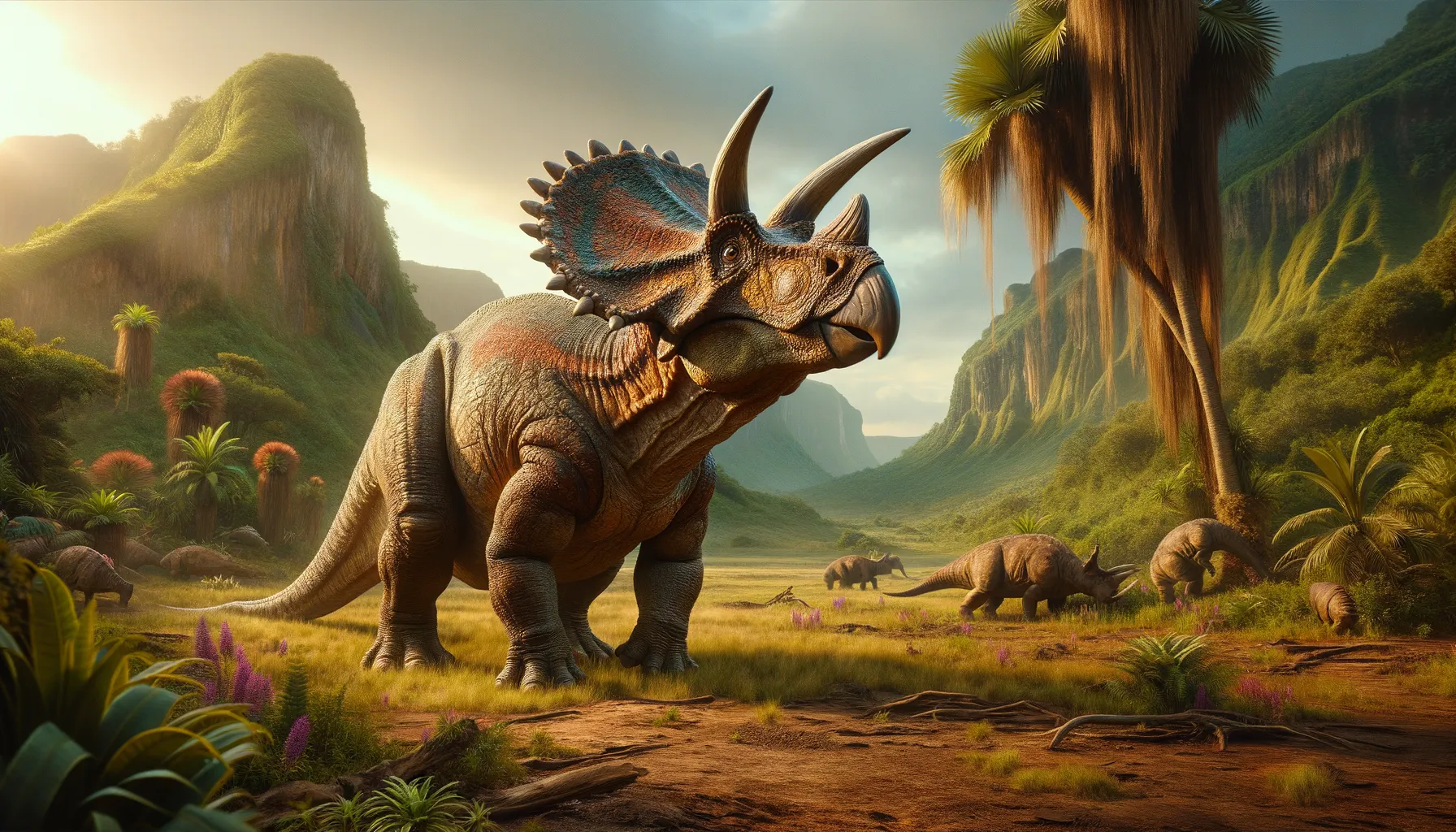
Proceratops
Graceful herbivore of the Cretaceous lands.
Period
Cretaceous
Length
Approximately 20 to 25 feet long.
Height
Around 7 to 9 feet tall.
Weight
Estimated at 3 to 4 tons.
Proceratops was a dinosaur of modest size with a prominent neck frill and a beak-like mouth. Known for its herding behaviour, this dinosaur roamed the earth during the Cretaceous period. With a primarily herbivorous diet, it thrived in various environments. Proceratops was first discovered in the late 19th century, leading to a deeper understanding of ceratopsian dinosaurs.
Diet
Proceratops primarily fed on vegetation, using its strong beak to clip leaves and stems. It likely consumed a variety of plant material, including ferns and flowering plants.
Hunting
Being an herbivore, Proceratops did not engage in hunting. It would graze in groups, relying on numbers for protection against predators.
Environmental challenges
Proceratops faced threats from large predators roaming the same regions. Seasonal changes could impact food availability, particularly during droughts. Their herding behaviour may have been an adaptation to better navigate these challenges.
Speed
Moderate pace, not known for speed.
Lifespan
Estimated to live around 10 to 20 years.
First discovery
First found in the late 19th century.
Fun Facts
- Proceratops, despite its name, never actually existed because it was a misinterpretation; the correct name is Protoceratops.
- Protoceratops lived approximately 75 to 71 million years ago during the Late Cretaceous period.
- This dinosaur was a herbivore, feasting mainly on plants that grew close to the ground.
- Protoceratops is known for its distinctive frill at the back of its head, which might have been used for display or protection.
- Fossils of Protoceratops have been found primarily in Mongolia, showcasing how different the prehistoric landscape was.
- Many Protoceratops fossils were discovered in environments suggesting they lived in groups or herds.
- A famous fossil shows Protoceratops locked in combat with a Velociraptor, providing a dramatic snapshot of dinosaur life.
Growth and Development
Young Proceratops likely grew quickly to avoid predation. They started as small hatchlings, gradually developing the distinctive frills as they matured. These features may have played roles in thermoregulation or species recognition.
Habitat
Proceratops thrived in varied environments, including plains and forested areas. These dinosaurs preferred regions with abundant vegetation. Suitable habitats provided essential shelter and food resources.
Interaction with other species
Proceratops interacted with other herbivorous dinosaurs, often competing for food. Predator-prey dynamics existed, with carnivorous dinosaurs posing significant threats. They might have coexisted with other ceratopsians, with differing feeding strategies reducing competition.
Natural lifespan
Their natural lifespan extended up to 20 years, barring predation.
Reproduction
Proceratops likely laid eggs in nests, possibly in communal nesting grounds. Parental care might have been present, ensuring juvenile safety until self-sufficiency. Clutches would typically consist of multiple eggs.
Social behaviour
They exhibited herding behaviour, grouping together for increased safety. Social structures might include kin groups or broader herds. Such behavior would deter predators and facilitate successful breeding.
Fossil locations
Proceratops fossils have been predominantly found in North America. Key sites include the famous dinosaur beds in Montana. Specimens provide valuable insights into ceratopsian diversity and evolution.
